Carved Post Or Totem Pole Item Number: E23549-0 from the National Museum of Natural History
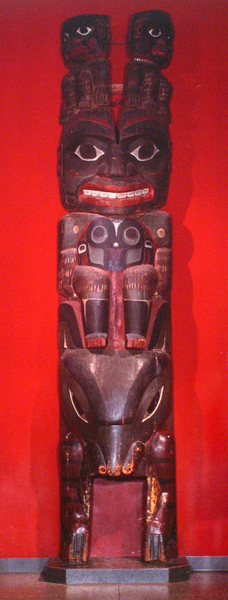
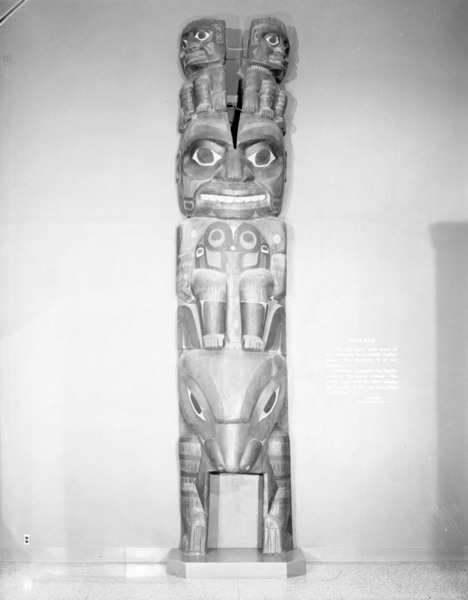
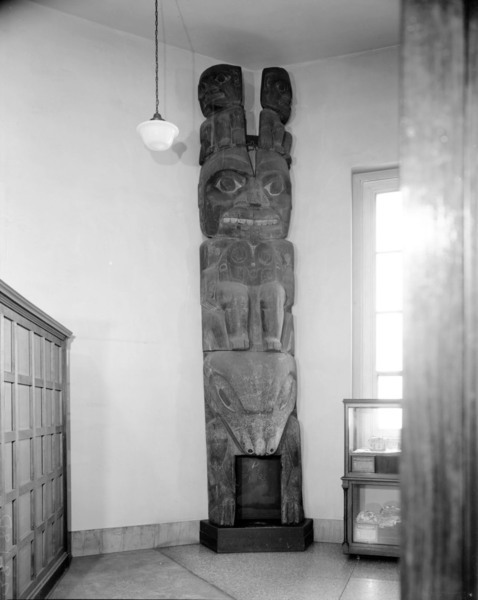
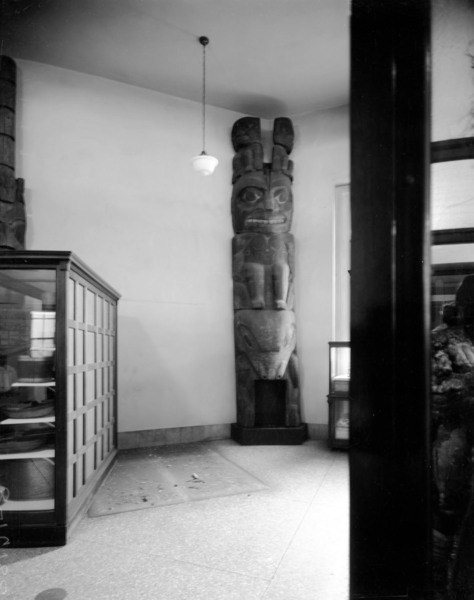


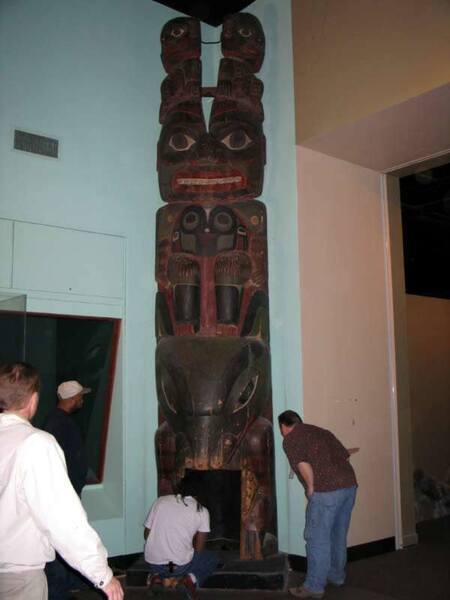
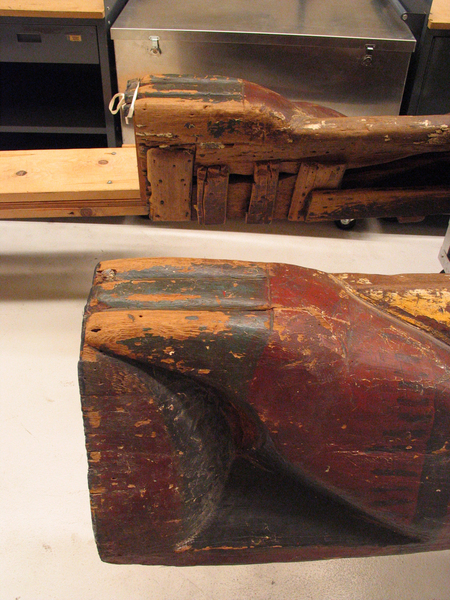
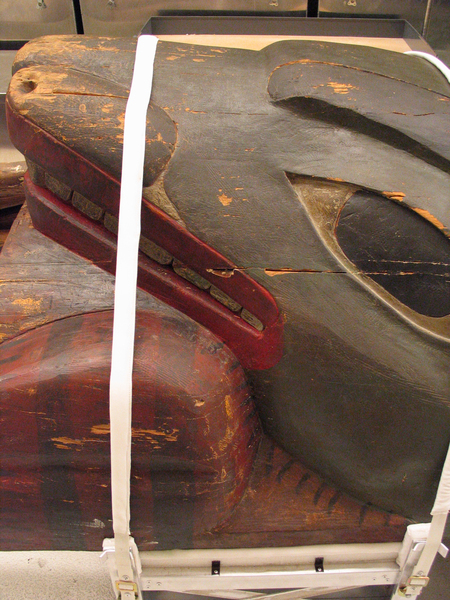
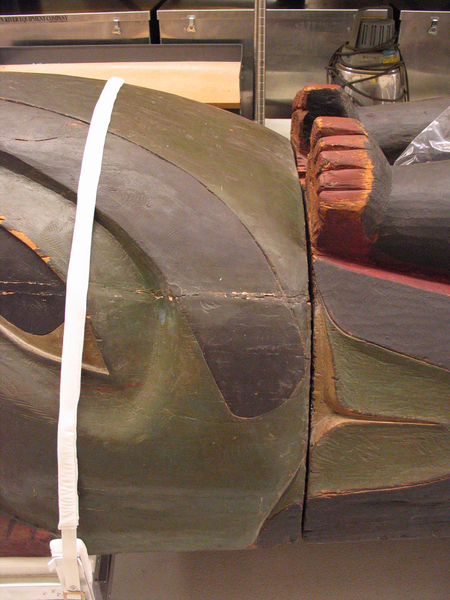

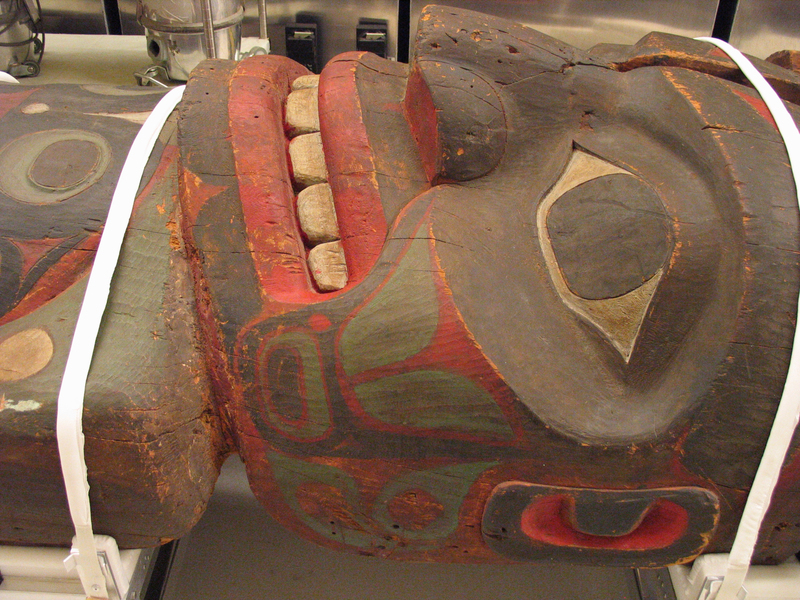
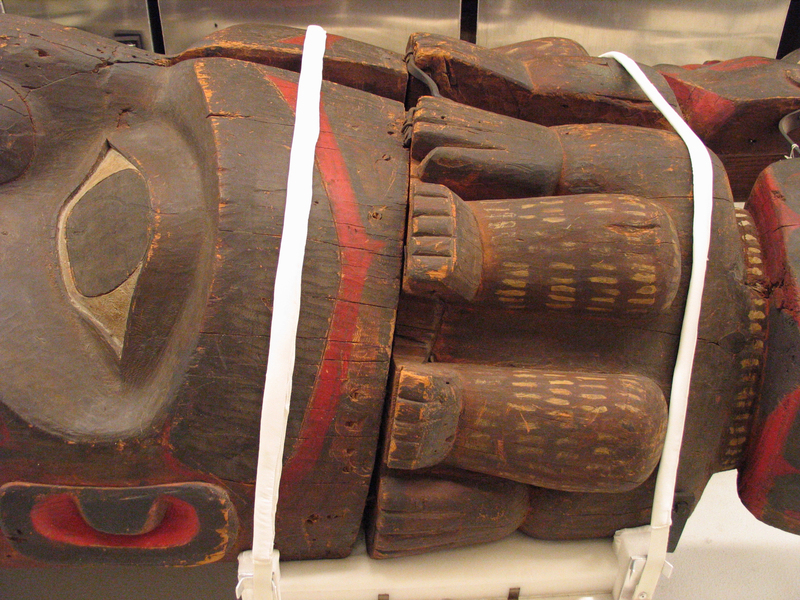
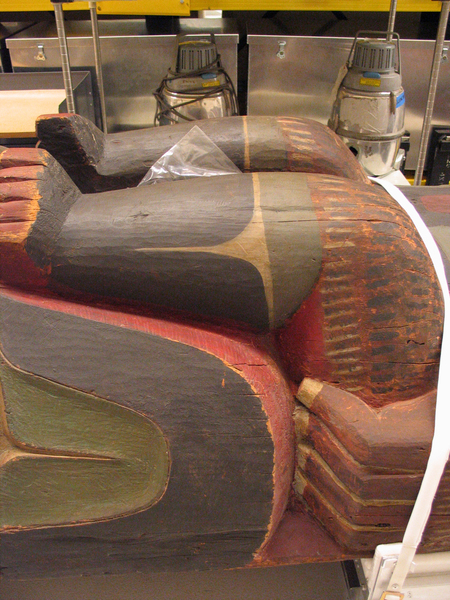




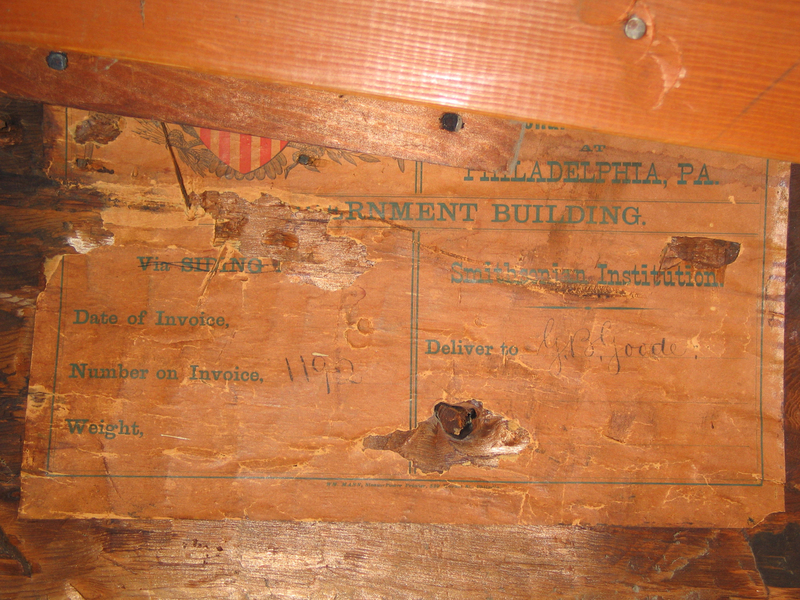
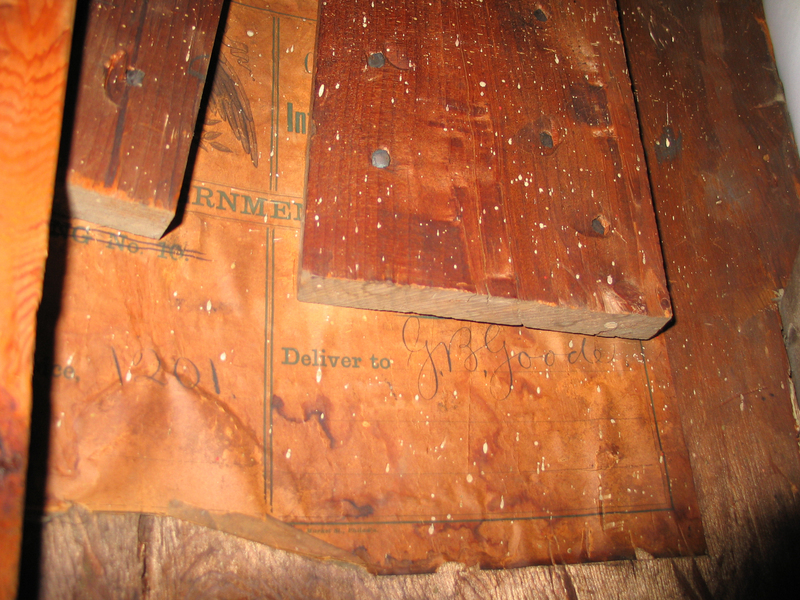
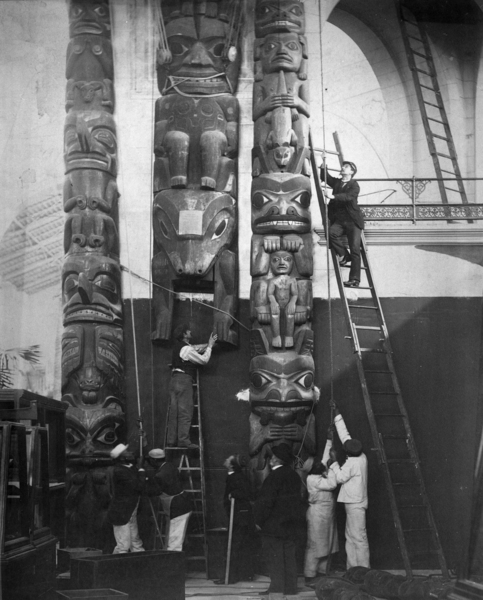
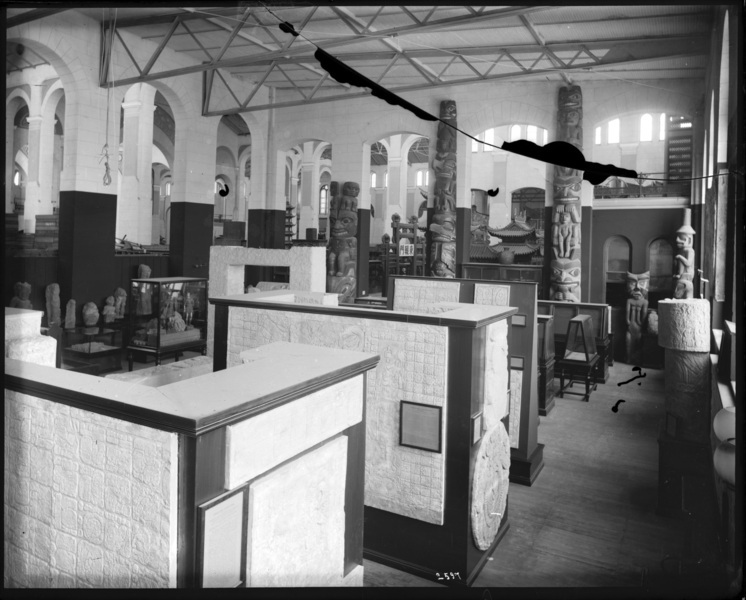

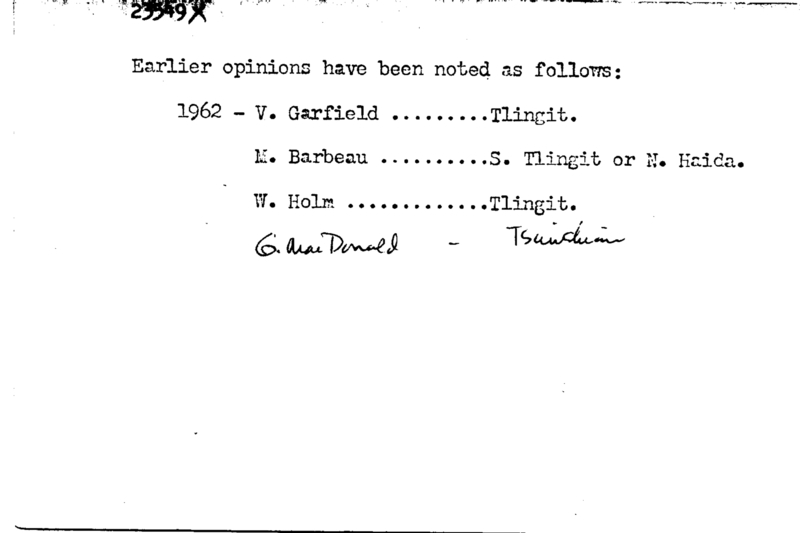
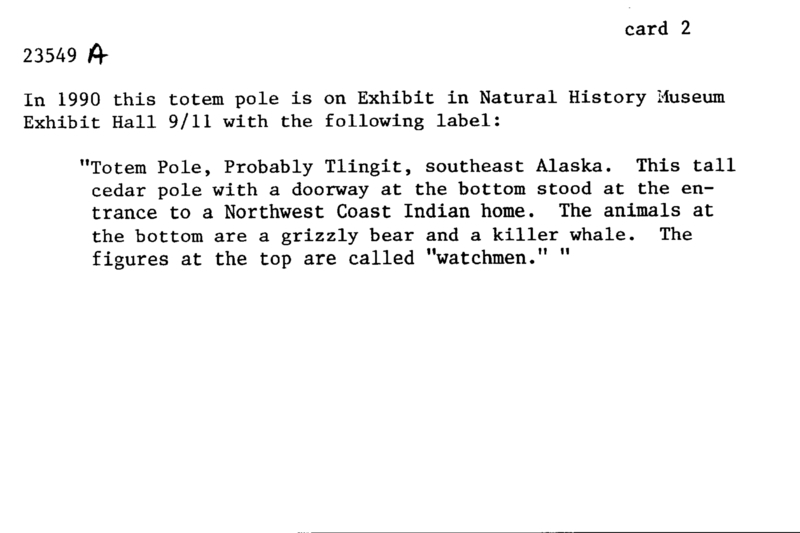
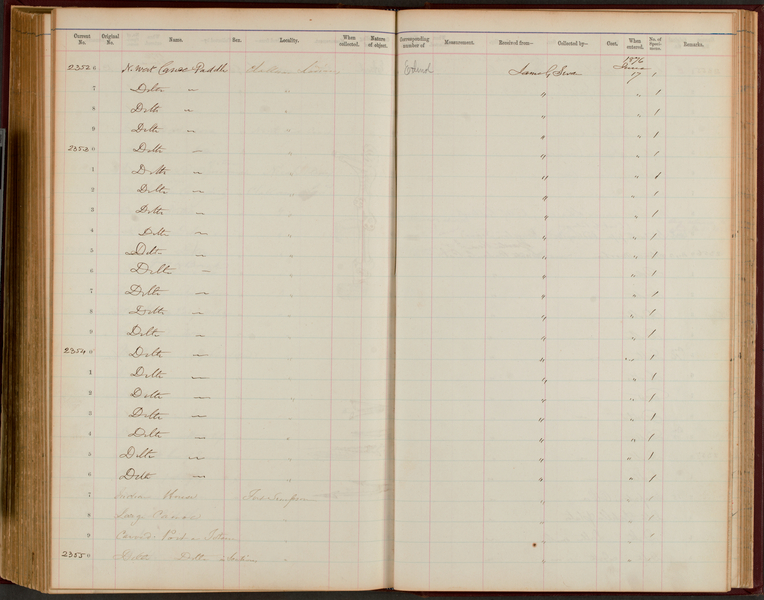
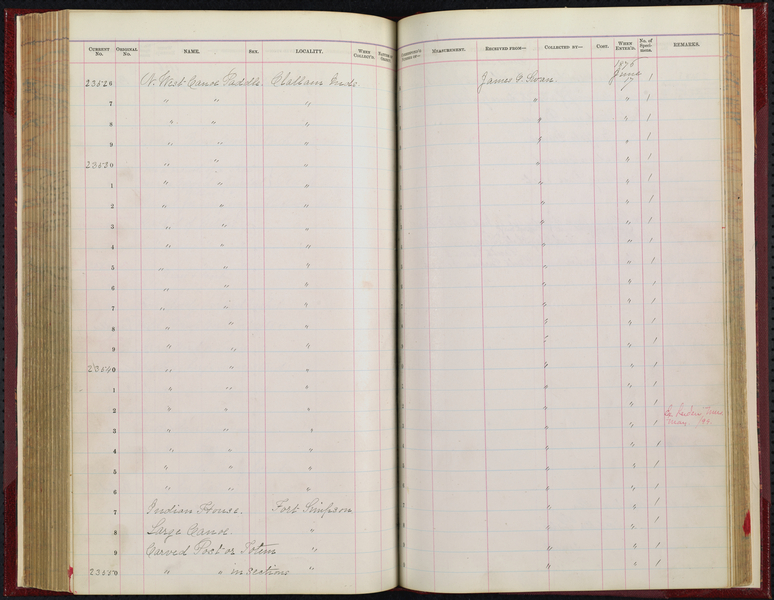
Notes
From card: "After an extensive survey of the totem poles in the USNM collections, it seems likely that this specimen is the 'door post' presently on exhibit near the entrance to Halls 9 and 11. It was probably collected for the 1876 Philadelphia Exposition and may be one of the poles obtained from the HBC trader at Ft. Simpson. Based on the USNM NW Coast collection and current NW Coast literature, the treatment of this specimen resembles Tsimshian work. 6/6/68 GP. Earlier opinions have been noted as follows: 1962 - V. Garfield.........Tlingit. M. Barbeau..........S. Tlingit or N. Haida. W. Holm.............Tlingit. G. MacDonald - Tsimshian."From card: "In 1990 this totem pole is on exhibit in Natural History Museum exhibit Hall 9/11 with the following label: "totem pole, probably Tlingit, Southeast Alaska. This tall cedar pole with a doorway at the bottom stood at the entrance to a Northwest Coast Indian home. The animals at the bottom are a grizzly bear and a killer whale. The figures at the top are called "watchmen.""The original shipping labels are still attached to the back of this pole. A comparison was made of the numbers on these invoices with Swan's journal (Swan's papers at the University of British Columbia in Vancouver; Swan's correspondence with Smithsonian Secretary Spencer Baird in the Smithsonian Archives). In the James Swan papers in the University of Washington's Special Collections a voucher was found dated April 15 1875 which read "To 1 carved column from Fort Simpson, BC in 4 packages marked No 11J 1 to 4, $100". 11J is the only pole that Swan shipped in 4 sections and the Smithsonian pole is in 4 sections. These shipping records now lead us to believe that Swan obtained this pole from Fort Simpson in British Columbia and the pole was most likely made by the Tsimshian people. George F. MacDonald of the Canadian Museum of Civilization and the Bill Reid Centre for Northwest Coast Art Studies at SFU has been working with the Tsimshian for many years and had been studying the poles of Fort Simpson. He pointed out several images, starting with an 1854 engraving of house fronts in Fort Simpson, that show what we believe to be the house with the pole in front of it. The engraving is of an 1852-1854 drawing by a member of the Virago crew done while they repaired their keel at Fort Simpson. There is also an 1867 sketch by Emil Teichmann, a drawing by Edwin Augustus Porcher from 1867 of the village of Lax Kw'alaams, and a George Horetzsky photograph of Fort Simpson in 1873. George MacDonald was trying to figure out why the pole had Haida style watchmen on top, when the 1854 Virago crewmember's drawing does not show watchmen. In the 1867 sketch by Emil Teichmann, the pole has watchmen on top. George MacDonald knew from other records that Haida had moved nearby around that time and he knew at least one Tsimshian chief had added watchmen to a Tsimshian pole out of influence from the Haida. Tlingit artists George and James Bennett and Tommy Joseph examined the pole and they all concluded that the wood of the watchmen are different pieces than the wood of the pole under it and they were added as a set long ago. See Anthropology Collections Lab accession file for additional information.Source of the information below: Smithsonian Arctic Studies Center Alaska Native Collections: Sharing Knowledge website, by Aron Crowell, entry on this artifact http://alaska.si.edu/record.asp?id=53 , retrieved 3-12-2012: Totem pole.A photo of this totem pole (in front of house front # E410732) outside the building at 1876 Centennial Exhibition in Philadelphia is in the Free Library of Philadelphia collections and is available online: Centennial Photographic Co.. Indian curiosities from Puget Sound [sic]. Stereoviews. Free Library of Philadelphia: Philadelphia, PA. https://libwww.freelibrary.org/digital/item/1949. (accessed Feb 25, 2018).
Item History
- Made in Fort Simpson, British Columbia, Canada
- Collected by James G. Swan in Fort Simpson, British Columbia, Canada during 1875
- Received during 1876
What
- Name
- Carved Post Or Totem Pole
- Identification Number
- E23549-0
- Type of Item
- crest column
Who
- Culture
- Tsimshian ?
- Field Collector
- James G. Swan
Where
- Holding Institution
- National Museum of Natural History
- Made in
- Fort Simpson, British Columbia, Canada
- Collected in
- Fort Simpson, British Columbia, Canada
When
- Collection Date
- during 1875
- Acquisition Date
- during 1876
Other
- Accession Number
- 005260